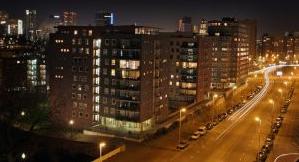MEZZANINE FINANCING
Mezzanine lenders have specific guidelines you must follow when applying for a loan. Understanding the complexities of mezzanine lender requirements may be daunting at first for the commercial property owner. If you are an owner or a prospective owner of commercial property in need of financing up to 80-90% LTV, it is important to understand the financing options available to you, so that you choose the best option for your project. APPLY HERE
A loan from a mezzanine lender is subordinate to the first mortgage and comes in various forms, and provides financing up to 85-90% of the required capital. The cost of this type of financing fluctuates based upon how high in the capital structure the financing is provided, what kind of asset is being financed, whether it is a stabilized asset or an asset that is being either repositioned (lower) or developed (higher). Mezzanine lenders offer rates running from 10% for stabilized apartments or stabilized in-fill shopping centers to 18-20% for hotels and value-added plays, condominium conversions and development, and higher for land. The various forms of mezzanine include:
1. Traditional Second Mortgage: This is secured by a second mortgage and is foreclosable. In today's market this type is rarely done, because most first mortgagees don't want to deal with a second mortgagee in the even of foreclosure.
2. Second Mortgage With No Rights to Foreclose: Generally these are given to the seller of the real property. They are paid from available cash flow, but in the even of default, they are not foreclosable. The result of the inability to foreclose gave rise the traditional mezzanine loan.
3. Traditional Mezzanine Loans: These are secured by an assignment of the ownership interest of the borrower. In the even of default, the mezzanine lender forecloses on the ownership of the borrower and becomes the borrower. An intercreditor and subordination agreement with the senior lender is necessary.
4. Preferred Equity: Here the mezzanine lender becomes a direct partner in the ownership but has a preferred return and if there is a capital even or an even of default, the lender (equity investor) has a liquidation preference. The lender investor only gets the same preferred returns as if he were a mezzanine lender; he does not share in the residual profits, except there might be an exit fee or other "kicker" if the leverage is high.
5. Equity Structured as Dept: Here an equity investor wants the protection offered to a mezzanine investor, i.e. collateral and because of the collateral (especially if it gets a mortgage), better protection in bankruptcy. Also an equity investor can get better protection if there are environmental liabilities as the result of federal legislation in 1997.
|











